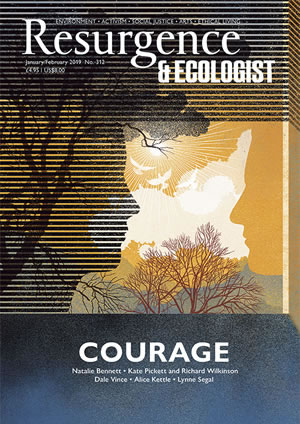Prior to the millennium, the poet Christina Rossetti (1830–94) was often seen as a shadowy figure beside her Pre-Raphaelite artist-brother, Dante Gabriel. Yet when I gazed as a student at ‘The Light of the World’, the fêted painting by Holman Hunt, Christina, the model for the figure of Christ, gazed back with luminous intensity.
Emma Mason’s new study looks beyond this image to a Christian faith in Rossetti that is arrestingly ecological. Part of the Spiritual Lives series from Oxford University Press, her book reveals Rossetti’s eco-sensibility as deeply significant for “a twenty-first-century present in which indifference to the spiritual is complicit with ... environmental crisis”.
It is a generous spiritual ecology, embracing humans and animals, living and non-living, with vitalised stars, wind, sea, angels and (as in Aquinas) ensouled plants. I see parallels with today’s anthroposophy, the eco-sensitive Steiner-inspired movement that is grounded in a numinous universe. To Rossetti, suggests Mason, creatures were both empirical and spiritual, echoing Christ’s hybrid nature as “human ... spirit ... a lamb, vine, bread, stone, light, and water”.
Structured biographically, the book evokes the excitement of the arrival of Anglo-Catholic Tractarianism in the Rossetti family’s parish. The notion that this overawed the young poet is challenged. Rather than a gloom-ridden Adventist, she is presented as a widely read writer for whom the “new creation” offered a healing prospect, in the ‘now’ as much as in the future, in which all beings find heightened communion.
One of the book’s themes is kenōsis or ‘self-emptying’: an influx of grace and mutuality enabled by a non-egoistic state. I see this in Rossetti’s depiction of the dew: “We give ourselves in silent secret ways, / Spending and spent in silence full of grace; / And thus are made like God…”
Rich in theology, can this book speak across cultures? As someone who is receptive to many faiths, I found it a rewarding adventure. One moment we meet Rossetti’s symbolic lilies and sparrows, and the next the Early Church Father Gregory of Nyssa with his delicious sense of the divine interconnectedness of all things. This belief, observes Mason, fuels Rossetti’s “love command” for us to harmonise with Nature, and is a great leveller. Her poetry shows that it is the non-human, however humble, that can teach us: “The merest grass ... / Lichen and moss and sturdy weed, / Tell of His love…”
Overall, Mason explores Rossetti’s proto-green faith with such elegant logic that Rossetti’s inner struggles are underplayed: “God ... breaks my heart tost to and fro; / My soul is wrung” is one of her many troubled outcrops. Though Rossetti can transcend Christian dualism and show heaven reflected on Earth, I sense that this dualism sometimes strained her. While Mason enjoys her “refusal of the gap” in her beautiful poem ‘Paradise’, in her later ‘An Afterthought’ I hear protracted longing (“Oh lost garden”) alongside her gritty hope that Eve “kept one part of Eden”.
Yet in showing a Trinitarian dance in her writing, and compassion for all living things, Mason affirms her healing vision: “come joy the joys unsatiate ... / I come – and I – and I” (The Face of the Deep). Tracing a “green grace” through Rossetti’s life and work – a kinship with all beings, held in divine Love – her book is well-timed and compelling.
Emma Mason will be speaking at Watts Gallery about Christina Rossetti: Poetry, Ecology. Faith on 26 January 2019. www.wattsgallery.org.uk






